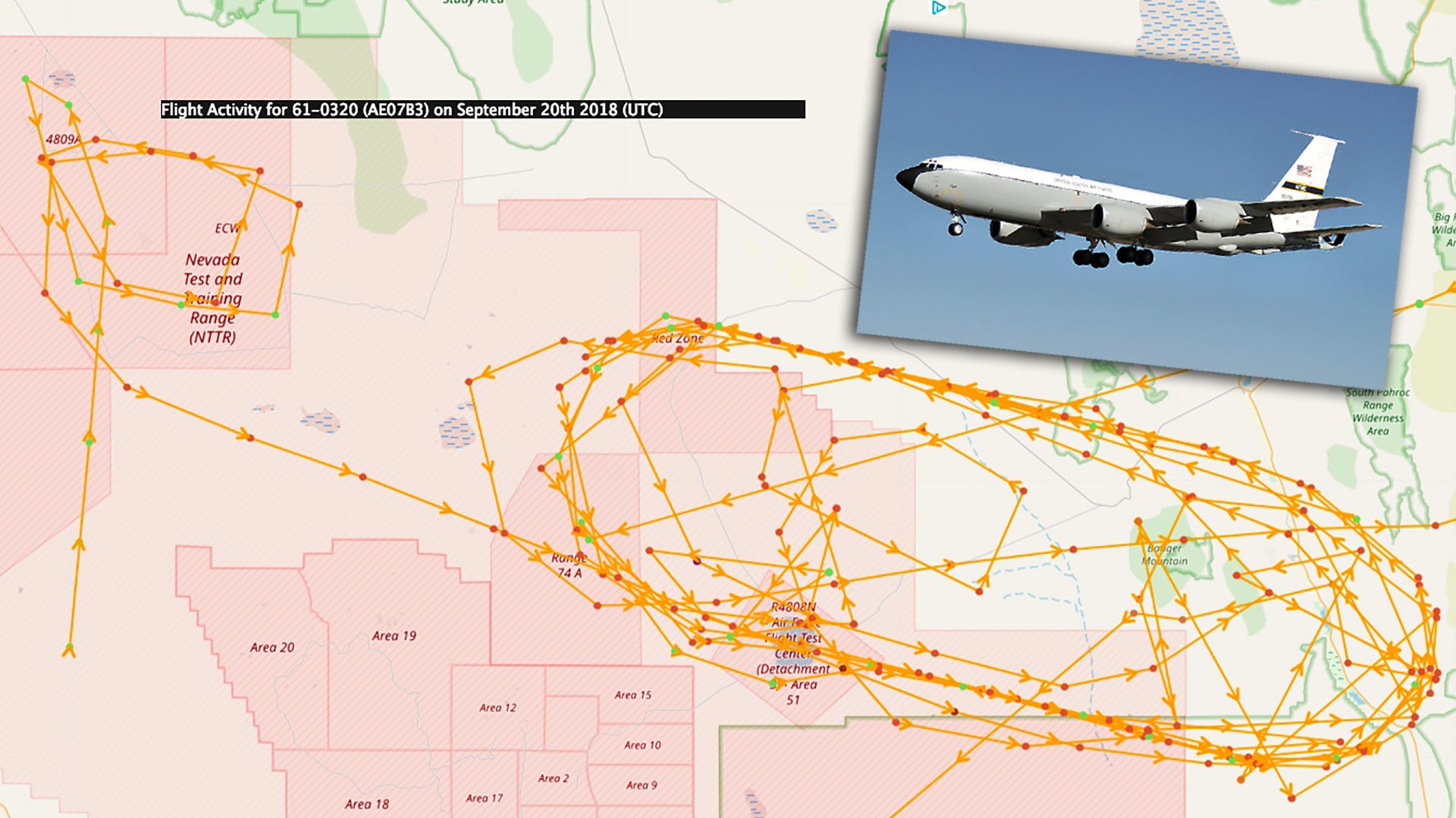You can’t track test flights of clandestine experimental aircraft flying out of Area 51 with flight tracking apps and websites, but you can track the tankers that support some of those operations. Often times, tankers out of Travis AFB with the callsign ‘SIERA 99’ or ‘SIERA 98’ will support more mundane test duties over the Nevada Test and Training Range (NTTR), but a tiny fleet of dedicated test tankers based out of the heart of the USAF’s flight test apparatus at Edwards AFB will provide much-needed fuel to very secretive flying machines. One of these flights was especially peculiar, occurring on September 20th, 2018 and taking place right over Area 51 that sits deep inside the NTTR under its own super-restricted airspace.
The white and gray painted NKC-135R test tankers of Edwards AFB are very busy, with one airframe, serial 61-0320, flying a lot throughout 2018 (you can check these flights out for yourselves here on adsbexchange.com). These flights take place all over the western United States. They include elongated racetrack shaped routes over Oregon and Washington in support of Boeing’s KC-46 program, flights out over the Southern California test ranges around the Channel Islands, and even deeper south, into an expansive and remote military operating areas across from the Baja Peninsula. But 61-0320’s most prolific flight profile is orbiting near Edwards AFB and supporting ongoing aircraft test programs at the base. Still, judging by the aircraft’s flight logs, it seems that its presence around Area 51, usually in the witching hour, has become increasingly in demand.
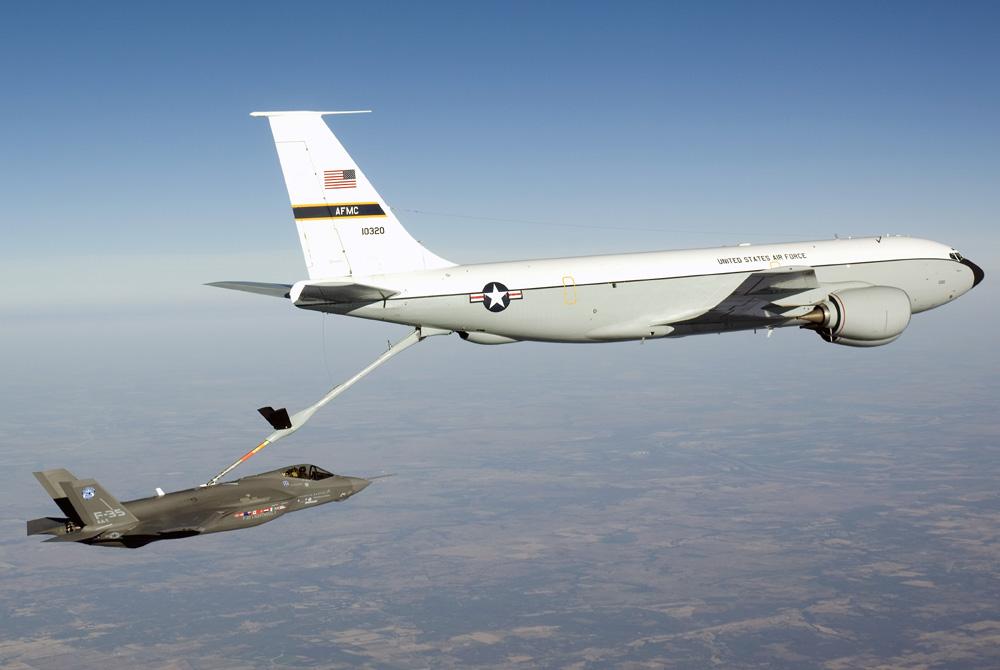
Normally, these missions seem to take place abreast or on the periphery of ‘The Box’ of highly restricted airspace over and surrounding Groom Lake/Area 51, which roughly measures 23 miles wide and 25 miles long. But on September 20th, 2018 the NKC-135, with no callsign, flew repeated routes at various speeds right over the secretive flight test facility. As you can see in the plot below, just before entering what is the most restricted airspace on the planet, the tanker held over Tonopah Test Range Airport. It could have ‘picked up’ an asset sortieing out of there before flying into ‘The Box’ or it could have just been holding overhead, we just don’t know.
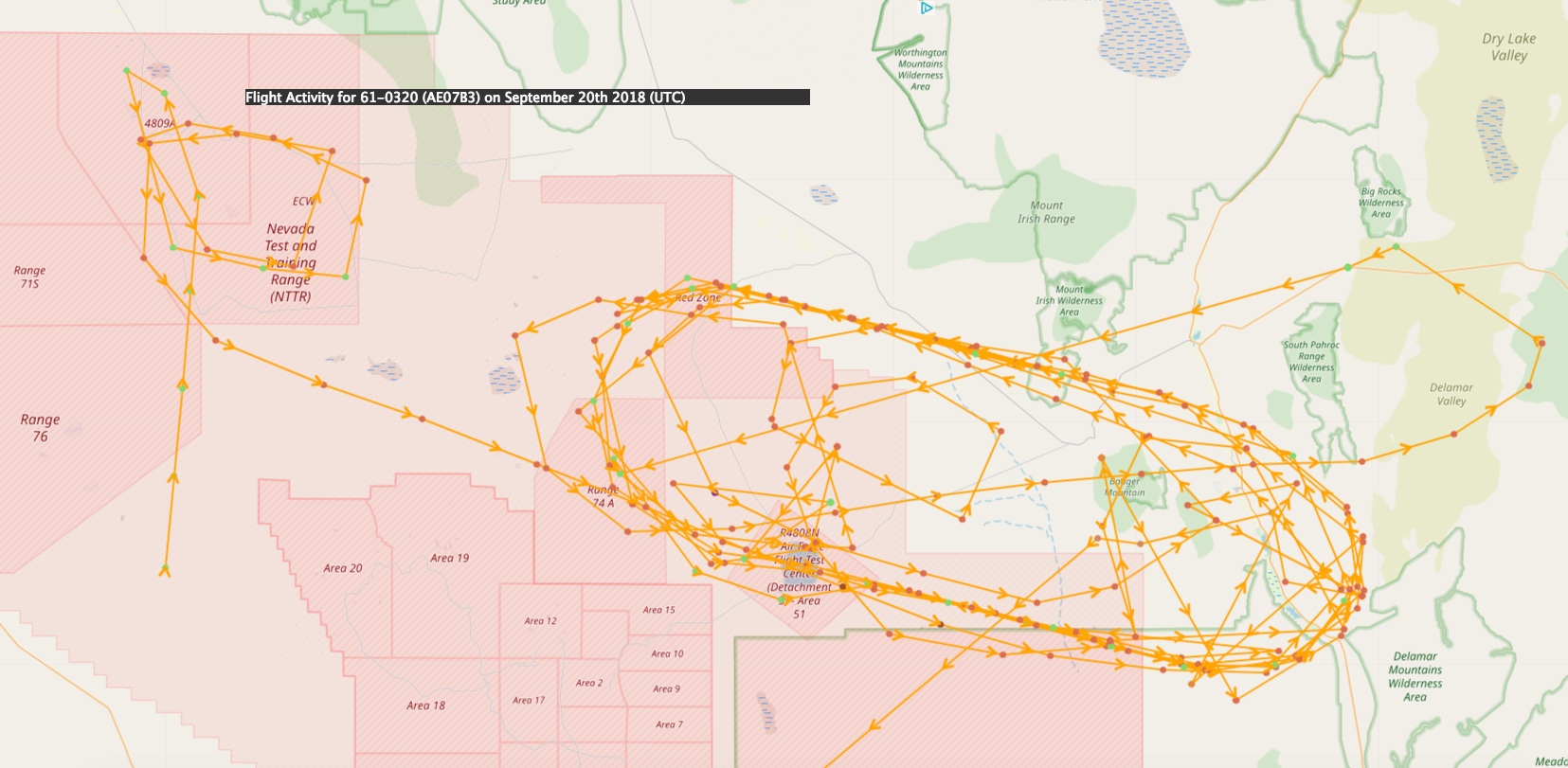
The whole affair began at about 11pm local time, with the tanker spending four hours crisscrossing over and very near Groom Lake before heading southwest before disappearing. By this time it was nearly 3am and it remains unclear if the aircraft flew back to Edwards or recovered at Area 51 or Tonopah Test Range Airport. You can see the entire route for yourself here.
It is worth noting that there is an error in the software that connected two flights into one. The next day, some ten hours later, the same jet flew a number of tracks over a desolate area north of Mojave Air and Space Port, before taking a straight route toward the coast—one that seems ideally suited for keeping over sparsely populated areas.
The 61-0320 went ‘feet wet’ south of Grover Beach and north of Vandenberg AFB. Once it was on station a few dozen miles off the coast, directly adjacent to Vandenberg, the NKC-135 began doing racetrack refueling patterns. At times, the data, which is not always perfectly accurate, shows that it tracked abruptly inland before heading back out to sea. By the time the flight, now under the “GHOST 57” callsign, was descending into Edwards, it was nearly 5pm. Once again, this is a separate mission from the one over Area 51 the night before but the software bridged it into a single continuous track.
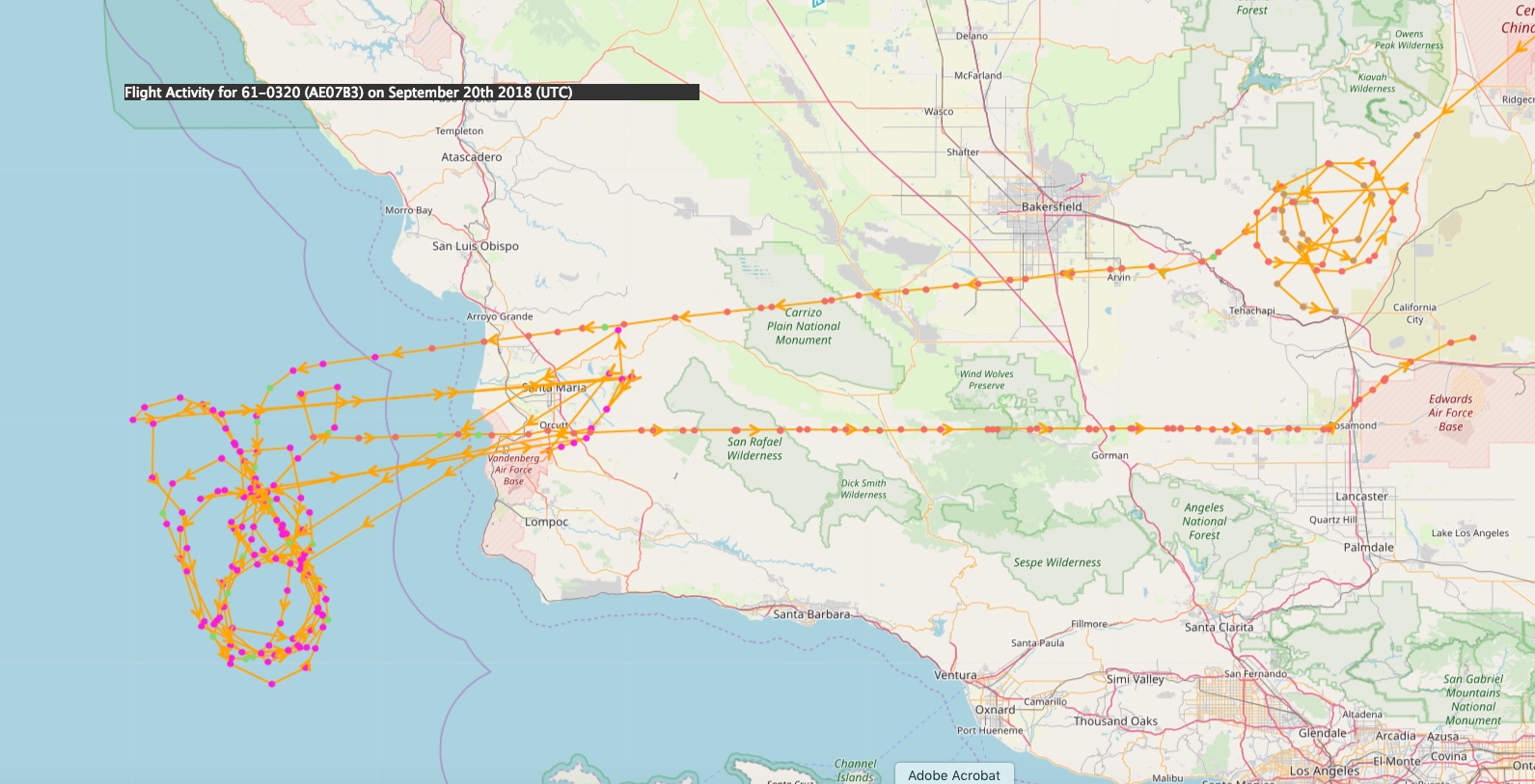
61-0320 is just one of two NKC-135Rs left in the inventory according to the KC-135 ‘bible’ written by Robert Hopkins. They are modified test tankers so if any tanker would be set up for such operations it would be them.
As I mentioned at the start of this piece, other tankers support test flights based on the workload at any given time, but it’s probably safe to say the NKC-135 of the 418th Flight Test Squadron gets the most sensitive and challenging missions and even ones that require modifications to the tanker itself. This is likely an increasingly important necessity for advanced unmanned aircraft test operations.
We have explored the unique and dynamic job of a KC-135 boom operator in the past, including the special job of refueling secret assets on test flights. You can read that entire feature here, but this is the part that relates most directly to this article:
“Secret aircraft need gas too, and they get it at the hands of qualified booms sitting in the back of KC-10 and KC-135 tankers just like the rest of the unclassified fleet does, but the process is a little different.
Edwards AFB has two refueling squadrons, although I only know of one KC-135 they actually own although it may be more now. The squadrons are the 445th FLTS (active duty) and the 370th FLTS (guard). The 445th [now the 418th Flight Test Squadron] supports all experimental aircraft testing while the 370th supports all developmental aircraft testing, but they both can share aircraft and crews, depending on mission needs and workload.
These squadrons do not organically provide enough aerial refueling capability to meet testing demands so Edwards AFB calls for active and guard refueling squadrons from all over the US to go there for two week TDY’s (temporary duty assignments). Usually these include two jets and crews, except during busy times, like when a new aircraft is in full developmental testing mode, such as the F-22 in the late ’90s and early 2000s or the F-35 today.
My first TDY to Edwards was in the early 2000s and my last was in 2006. We belonged to the 445 FLTS during our time there and you have to have a top secret clearance, not an interim clearance (all booms have top secret clearances or interim clearances for SIOP purposes). When we left our home base, we were expecting to be there for F-22 support, at least that’s what our paperwork said. But when you get there it’s hit or miss what you actually get to refuel. If your flight plan is going into the “box” area tracks (restricted airspace surrounding Area 51), most likely you are going to have security with you (but not always), and most likely your going to see something maybe a few dozen people have seen before, depending on the compartmentalization of the project. It is very exciting to see what actually shows up on the boom to say the least.
These two week missions consisted of flying every morning or night for around 3-4 hours and culminated with leaving on the second Friday, heading back to hour home base. If you were one of the lucky ones to see a black project, then the 445th Squadron Commander and Chief Boom Operator gave you the infamous tanker black world patch. It’s also known as a “Friday” or “morale patch.” I got mine as a fresh instructor Boom much to the jealousy of fellow Booms back home. We also got a certificate that was actually classified secret and had to be carried in our “secrets” bag. When returning to our home base, the certificates were displayed in the top-secret SIOP briefing room located in “The Vault” for everyone to see.
That certificate was the first time I’ve seen the six stars used in conjunction with Area 51. Five stars representing the “5” and the additional star representing the “1” in the base’s designation. You can see the same stars on many clandestine program patches that were test flown out of Area 51. As for the certificate itself, unfortunately, I can’t share what else was on it. The patch, on the other hand, featured “Spooky” (from the Spy vs Spy comics), and our motto “Nobody Kicks Ass Without Tanker Gas…Nobody!”
I was actually part of a lucky crew that flew into “a test facility in the center of the Nellis Range Complex” for a SCI briefing on a particular jet I would be refueling. It was a first actual offload to said jet ever. So it was pretty cool to be able to do the honors.
Once again, our primary mission when TDY to Edwards AFB was for F-22 flight development and testing support. We took off right after they did and landed when they were done. They got all the gas they needed on the mission, which usually lasted three hours or so. And of course, we had unexpected guests from time to time like the Gray F-117s from the Skunkworks plant located over at Palmdale, as well as some other “unique” aircraft operating in the area that I cannot describe.”
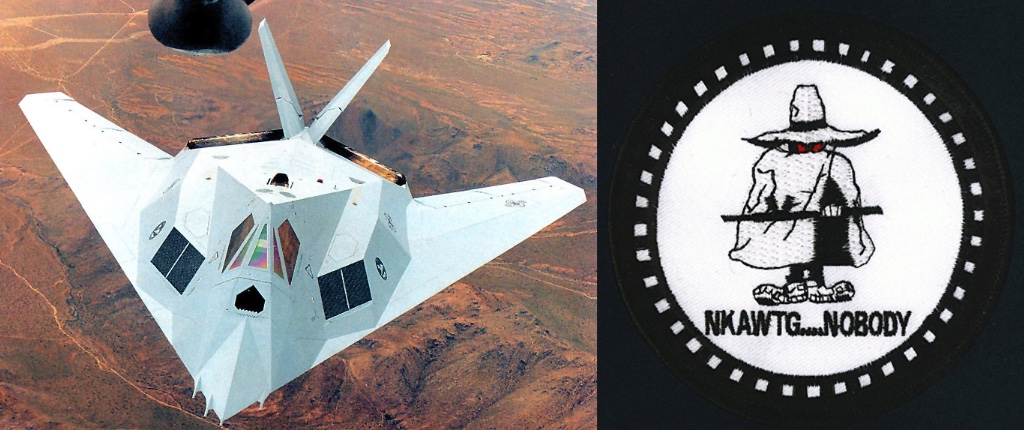
But once again, if you look at the flights of 61-0320 over the last year, and there are many into the NTTR area, they rarely cross directly over or even very near the base and never do so over and over in a tight pattern like the flight on September 20th did.
There are other unusual flights of 61-0320 over the last year, but none quite as bizarre as the one described above. Beyond the regular refueling flights over the Mojave Desert, here are some interesting examples of other areas 61-0320 regularly services.
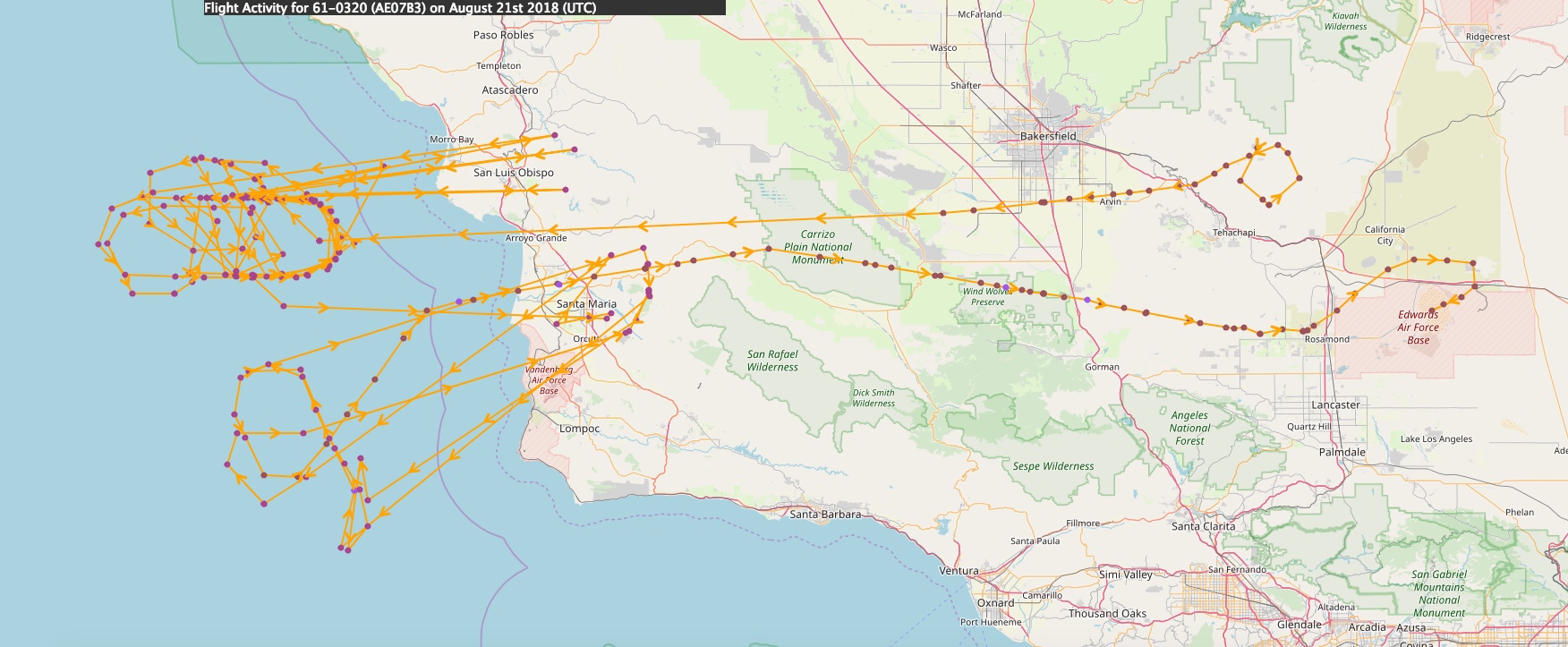
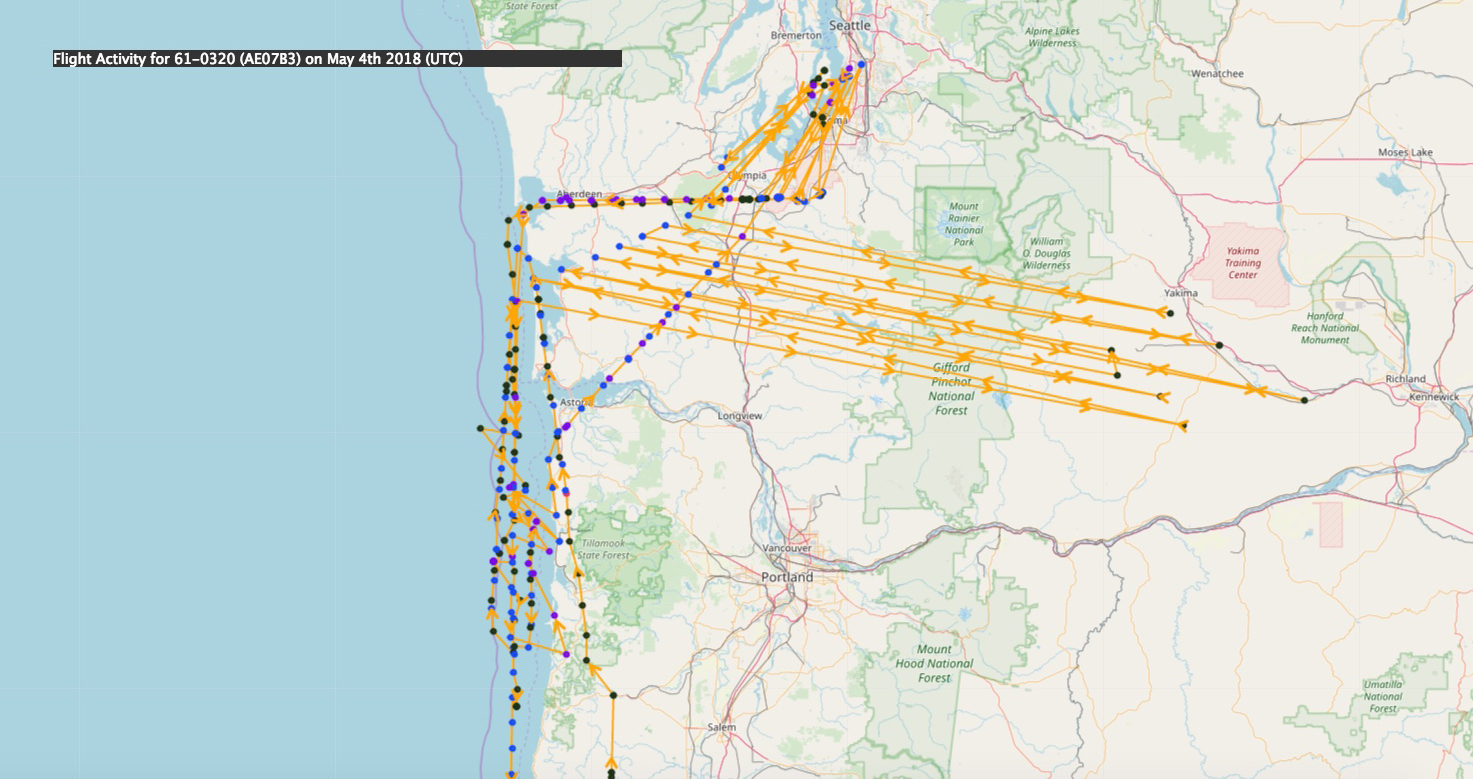

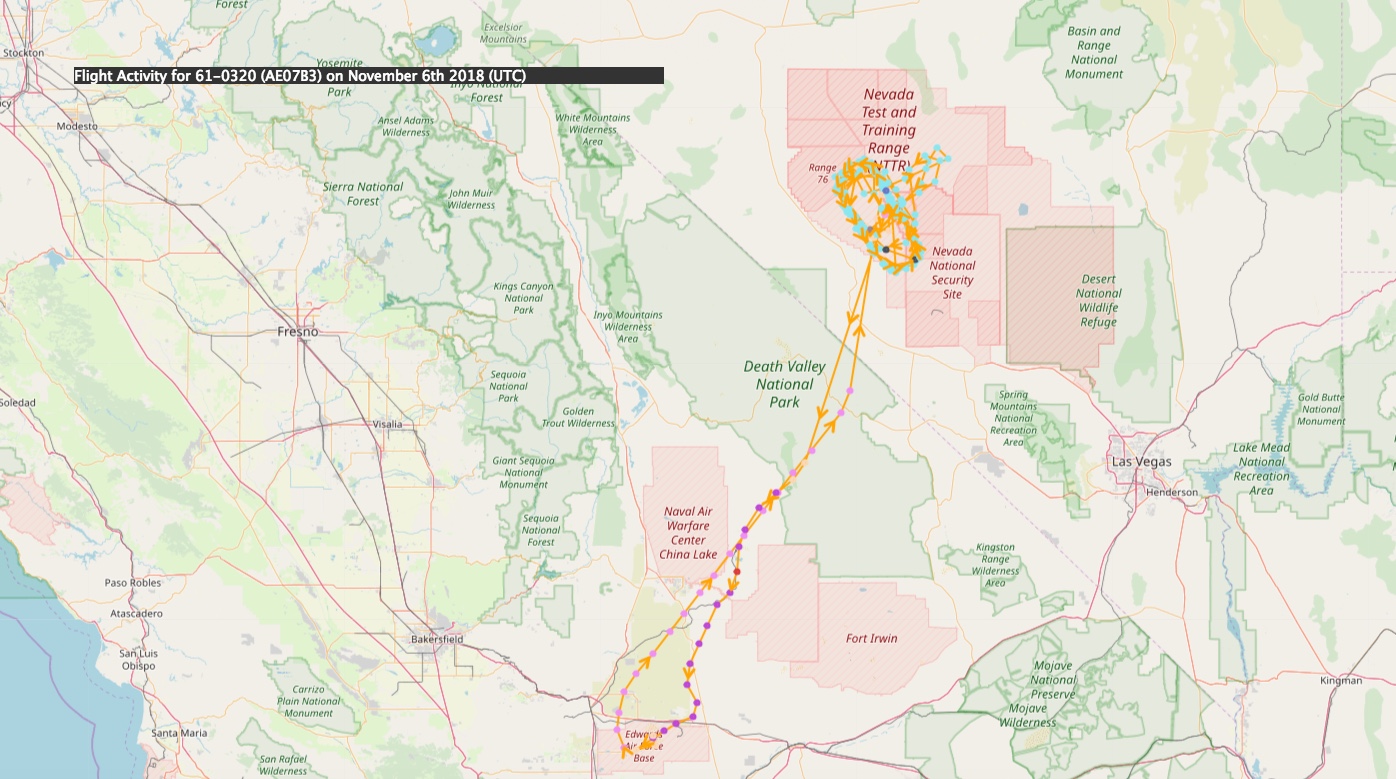

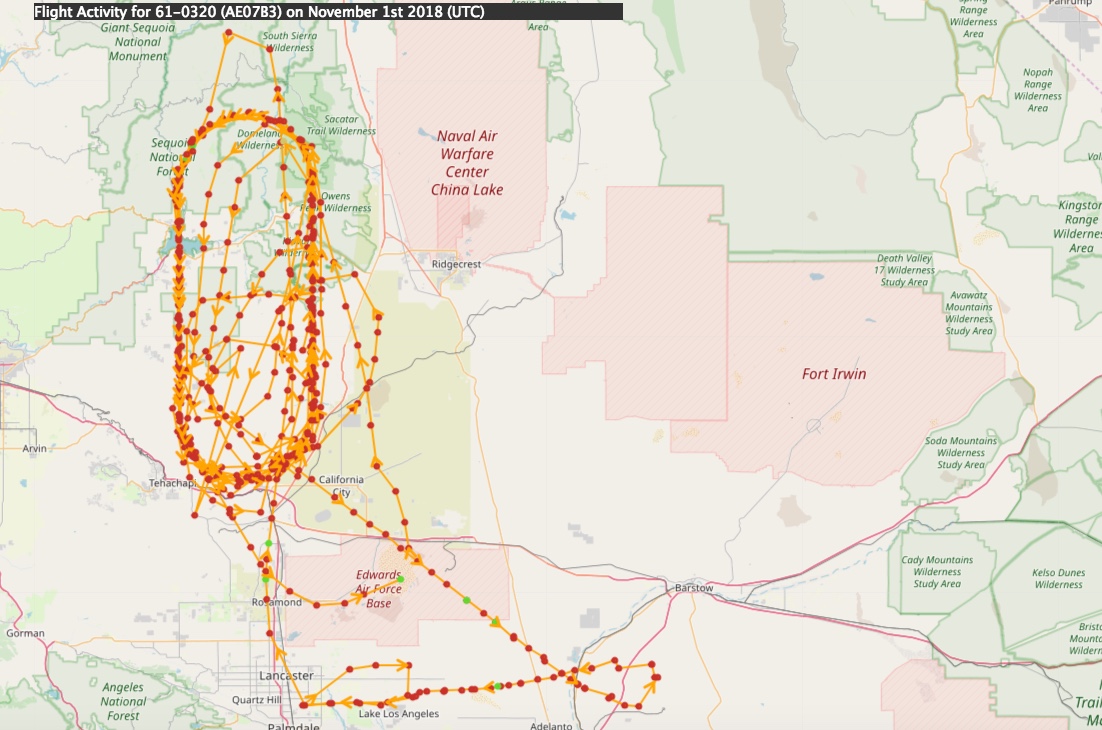
We have no way of knowing what test program the NKC-135R 61-0320 was supporting that required its presence directly overhead Groom Lake for hours on end on that September night, but it’s another reminder of just how active these tankers are in supporting clandestine aircraft development operations. The old adage we often come back to here at The War Zone is Nobody Kicks Ass Without Tanker Gas, often abbreviated as NKAWTG. It rings true whether it be for thirsty fighters over a war zone, special operations aircraft about to penetrate contested airspace at low-level, or even some exotic experimental aircraft being tested over America’s most notorious yet mysterious air base.
In the end, America’s aerial refuelers are intrinsic to making it all happen.
Contact the author: Tyler@thedrive.com
